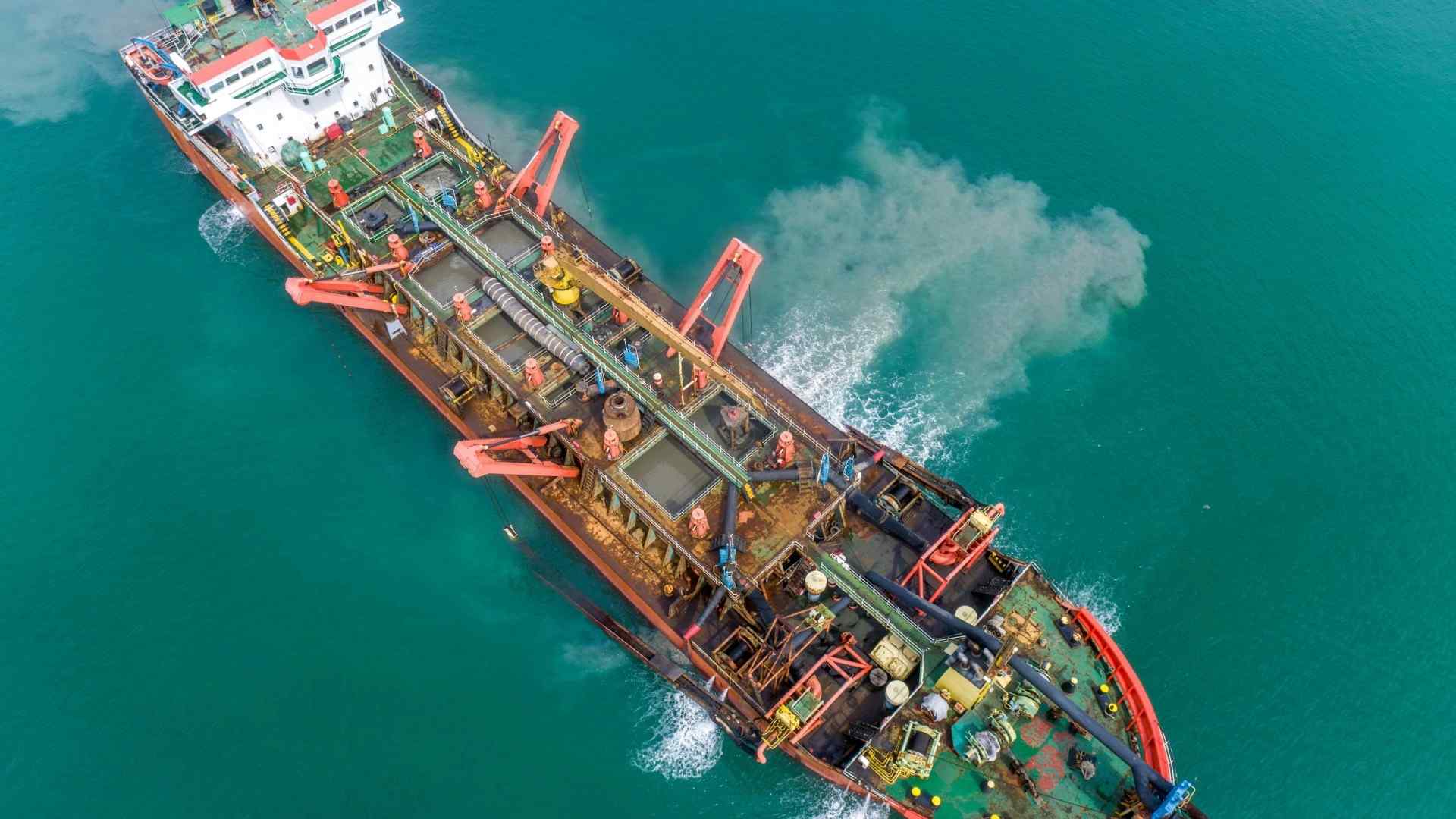Introduction
Manistee Harbor, a vital waterway for Michigan’s commercial shipping and recreational boating community, is set to undergo significant improvements as King Company has been awarded the contract to perform harbor dredging. The project will restore navigation channels, improve safety for vessels, and support local commerce by ensuring reliable access to this key harbor on Lake Michigan.
The Importance of Harbor Dredging
Over time, natural processes such as sedimentation gradually reduce the depth of navigation channels. Sand, silt, and other materials accumulate on the harbor floor, limiting the draft available for ships. Left unchecked, this buildup can hinder vessel access, increase risks of groundings, and disrupt commercial activity.
That is where dredging becomes essential. By removing excess sediment, dredging restores the designed depth of waterways, ensuring safe passage for shipping and boating. For harbors like Manistee, where commercial and recreational activities drive local economies, timely dredging is not just a maintenance task—it is a critical investment in regional growth.
Why Manistee Harbor Needs Dredging
Manistee Harbor has long served as an access point for freighters, fishing boats, and recreational vessels. However, the harbor has faced sediment buildup due to natural shoreline processes, storms, and river inflows. This sedimentation has narrowed channels and reduced depth, making navigation more difficult and potentially dangerous.
The upcoming harbor dredging project will target key areas where sediment accumulation is most severe. By deepening the channels, the project will restore reliable vessel access and ensure the harbor remains a safe, functional, and attractive destination.
King Company’s Role in the Project
King Company, a Michigan-based contractor with decades of experience in marine construction and dredging, will lead the effort. The company has a long history of executing complex dredging projects across the Great Lakes, combining advanced equipment with skilled crews to deliver efficient and environmentally responsible results.
For Manistee, King Company will deploy heavy-duty dredges designed to remove large volumes of sediment while minimizing disruption to ongoing harbor activities. Once removed, the dredged material will be carefully managed in accordance with state and federal guidelines, ensuring that disposal or beneficial reuse aligns with environmental best practices.
Economic Benefits of Harbor Dredging
The Manistee Harbor dredging effort is more than just an infrastructure project—it is a driver of economic vitality. By restoring full navigation depth, the project will:
- Support local commerce: Commercial shipping companies will benefit from improved access, reducing risks and delays.
- Enhance recreation: Boaters, anglers, and tourists will enjoy safer navigation, boosting tourism revenue.
- Preserve jobs: Harbor-dependent industries such as fishing, shipping, and tourism rely on well-maintained waterways.
- Encourage investment: A reliable, safe harbor attracts new business opportunities and supports regional development.
Communities across the Great Lakes region depend on harbors like Manistee not just for transportation but as anchors for local economies. Regular harbor dredging ensures that these economic engines keep running smoothly.
Environmental Considerations in Dredging
Modern dredging is carried out with significant attention to environmental impacts. Contractors like King Company must comply with environmental regulations that protect aquatic life, water quality, and nearby ecosystems. Sediment testing is typically performed before dredging to ensure safe handling of materials, and dredging schedules are sometimes adjusted to avoid sensitive breeding or migration periods for fish and wildlife.
In some cases, dredged material can be repurposed for beneficial uses, such as beach nourishment, habitat restoration, or construction fill. This approach transforms dredging from a simple maintenance task into an opportunity to enhance environmental resilience.
Harbor Safety and Navigation Improvements
Safety is a primary motivation behind the Manistee project. When channels are shallow, larger vessels risk running aground, which can cause costly damage and environmental hazards. By restoring depth, harbor dredging ensures that ships can navigate without incident. Recreational boaters will also benefit from clearly defined and deeper passages, reducing risks during peak boating seasons.
The project aligns with a broader commitment by federal and state agencies to maintain safe and reliable Great Lakes harbors, which serve as critical infrastructure for both local communities and international trade.
Looking Toward the Future
Once King Company completes the Manistee Harbor dredging project, the benefits will extend well beyond immediate navigation improvements. The harbor will be positioned as a safe, efficient, and economically vibrant hub for years to come.
However, dredging is not a one-time solution. Sediment will continue to accumulate naturally, requiring periodic maintenance dredging to sustain the improvements. By securing reliable contractors and funding, Manistee can ensure its harbor remains fully operational for both commercial and recreational users well into the future.
Conclusion
The awarding of the Manistee Harbor dredging contract to King Company marks a critical step in maintaining one of Michigan’s important waterways. With decades of expertise, King Company will restore navigation channels, enhance safety, and support economic activity through efficient dredging.
For the Manistee community, the project represents more than sediment removal—it is an investment in the harbor’s future, ensuring that local businesses, residents, and visitors can continue to rely on this vital waterway. As work begins, Manistee Harbor stands as a strong example of how harbor dredging sustains both economic prosperity and environmental stewardship.
